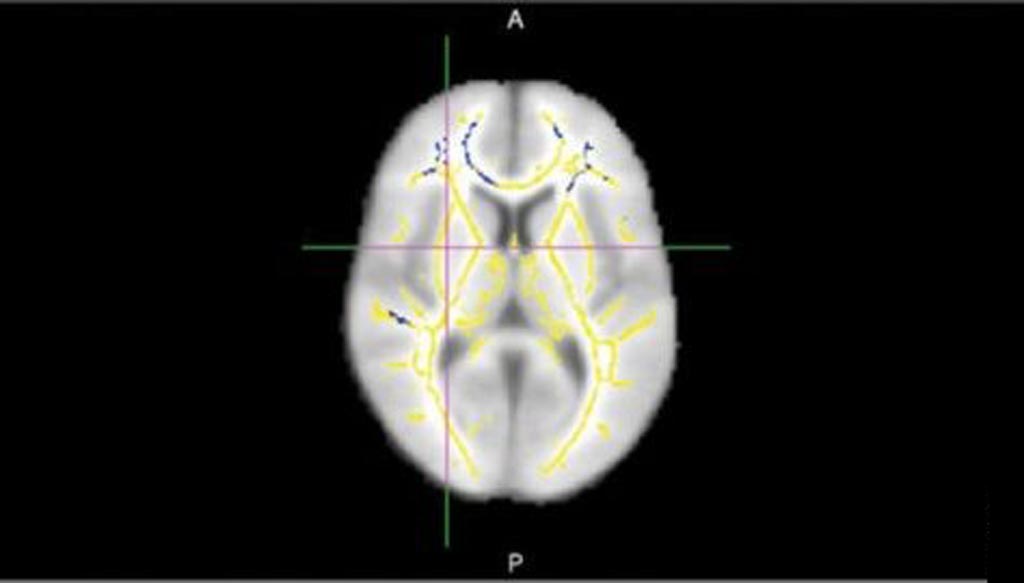MRI Scanning Technique Could Predict Alzheimer's Disease
By MedImaging International staff writers
Posted on 03 Dec 2018
Diffusion tensor imaging (DTI) can be used to accurately assess the condition of the brain's white matter in patients with suspected Alzheimer's disease (AD), according to a new study.Posted on 03 Dec 2018
The study, by researchers at Washington University School of Medicine (WUSTL; St. Louis, MO, USA), involved 20 patients (average age 73.4 years) from the Alzheimer's Disease Neuroimaging Initiative (ADNI) who underwent magnetic resonance imaging (MRI) on a 3T scanner. Protocols included T1 volumetric imaging, magnetization-prepared rapid acquisition gradient echo (MP-RAGE), or spoiled gradient-recalled echo (SPGR). They then measured white-matter integrity in the brain using DTI fractional anisotropy, which measures the flow of water molecules along white-matter tracts.

Image: DTI-MRI showing areas of reduced fractional anisotropy, indicating white-matter brain damage (Photo courtesy of Cyrus Raji / RSNA).
The scans from each subject were analyzed for values for fractional anisotropy, mean diffusivity, axial diffusivity, and radial diffusivity maps. Half of the patients experienced cognitive decline and AD over various time points, while half remained cognitively normal. Among the global DTI measures, differences in fractional anisotropy showed 89-95% correlation with progression to AD, while radial, axial, and mean diffusivity did not show any significant differences. The study was presented at the annual meeting of the Radiological Society of North America (RSNA), held during November 2018 in Chicago (IL, USA).
“Alzheimer's disease is the most common cause of dementia in the world and is expected to increase globally, and especially in the US, as the population gets older,” said lead author Professor Cyrus Raji, MD, PhD, of the WU Mallinckrodt Institute of Radiology. “With DTI you look at the movement of water molecules along white matter tracts, the telephone cables of brain; when these tracts are not well connected, cognitive problems can result. With early detection, we can enact lifestyle interventions and enlist volunteers into drug trials earlier.”
Water molecules undergo random Brownian motion, also known as diffusion. MRI is sensitive to this motion, as controlled by the b-value. When the b-value equals zero, the images are not weighted by diffusion; when the b-value is greater than zero the images are diffusion-weighted. When the diffusion is hindered, by cellular membranes, the myelin shield, etc., the signal is higher. DT-MRI can thus be used to visualize fiber structures, as it can readily differentiate water molecule diffusivities both along and against the fiber.
Related Links:
Washington University School of Medicine














